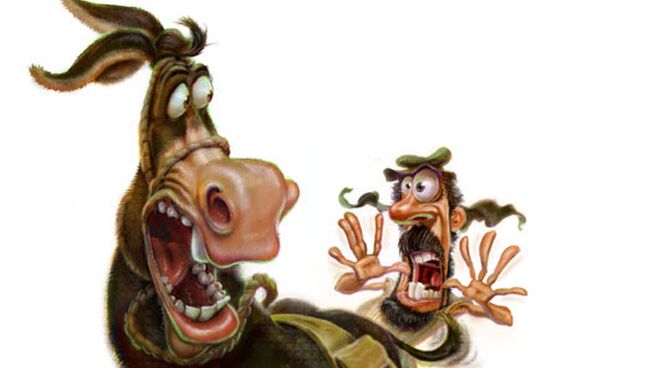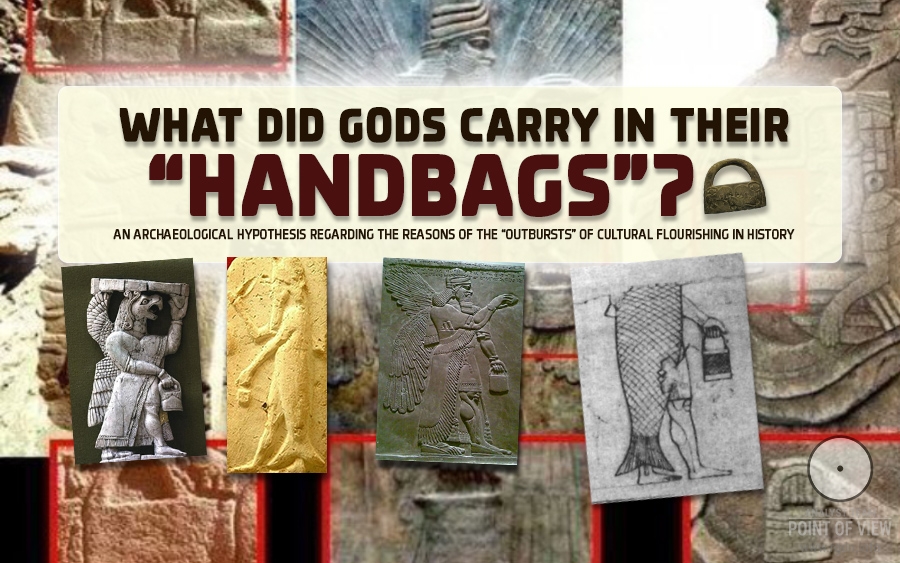on the way to Mecca
Part Three:
Mohammed’s talking donkey taken from Balaam
by
Damien F. Mackey
The seer, Balaam, is famous for having a talking donkey (Numbers 22:21-30), an ancient story whose marvel has been picked up, but altered, in later mythologies.
The Egyptian tale of Bata, for instance, has talking oxen, and animals are made to talk even in the Book of the Dead.
The Prophet Mohammed is said to have ridden a donkey, Ya`fūr, and, according to an account of it this donkey spoke first to Mohammed, telling him that it had formerly been owned by a Jew.
At: https://www.answering-islam.org/Shamoun/yafoor.htm we read this one of the “Amazing Fables of Islam”:
Muhammad and his Donkey:
The Amazing Fables of Islam
Dimitrius & Sam Shamoun
From the book "The Beginning and the End" written by Ibn Kathir, Chapter Six, Entry title: "The Conversation of the Donkey" ….
More than one of the reciters have denied this hadith, however it was narrated by Abu Muhammad Ibn Abdullah Ibn Hamid, narrated by Abu Al-Hussian Ahmad Ibn Hadan Al-Sijsi, narrated by Umar Ibn Muhammad Ibn Bajir, narrated by Abu Jafaar Muhammad Ibn Mazid, narrated by Abu Abdullah Muhammad Ibn Akba Ibn Abu Al-Sahba’, narrated by Abu Huthaifa, narrated by Abdullah Ibn Habib Al-Hathli, narrated by Abu Abd Al-Rahman Al-Silmy, narrated by Abu Manthur who said,
"When Allah opened Khaybar to his prophet Muhammad – may Allah’s prayers and peace be upon him – he (Muhammad) received as his share of the spoils four sheep, four goats, ten pots of gold and silver and a black, haggard donkey.
The prophet – may Allah’s prayers and peace be upon him – ADDRESSED the donkey asking, ‘What is your name?’ THE DONKEY ANSWERED, ‘Yazid Ibn Shihab. Allah had brought forth from my ancestry 60 donkeys, none of whom were ridden on except by prophets. None of the descendants of my grandfather remain but me, and none of the prophets remain but you and I expected you to ride me. Before you, I belonged to a Jewish man, whom I caused to stumble and fall frequently so he used to kick my stomach and beat my back.’
The prophet – may Allah’s prayers and peace be upon him – said to him, ‘I will call you Ya’foor, Oh Ya’foor.’ Then Ya’foor REPLIED, ‘I obey.’ The prophet then asked, ‘Do you desire females?’ The donkey replied, ‘NO!’
So the prophet used to ride the donkey to complete his business and if the prophet dismounted from him he would send the donkey to the house of the person he wanted to visit and Ya’foor would knock at the door with his head. When the owner of the house would answer the door, the donkey would signal to that person to go see the prophet.
When the prophet died, the donkey went to a well belonging to Abu Al-Haytham Ibn Al-Tahyan and threw himself in the well out of sadness for the prophet’s death, making it his grave."
Arabic Text:
لما فتح الله على نبيه صلى الله عليه وسلم خيبر أصابه من سهمه أربعة أزواج نعال وأربعة أزواج خفاف وعشر أواق ذهب وفضة وحمار أسود، ومكتل قال: فكلم النبي صلى الله عليه وسلم الحمار، فكلمه الحمار، فقال له: "ما اسمك؟" قال: يزيد بن شهاب، أخرج الله من نسل جدي ستين حمارا، كلهم لم يركبهم إلا نبي لم يبق من نسل جدي غيري ولا من الأنبياء غيرك، وقد كنت أتوقعك أن تركبني قد كنت قبلك لرجل يهودي، وكنت أعثر به عمدا وكان يجيع بطني ويضرب ظهري، فقال له النبي صلى الله عليه وسلم: "قد سميتك يعفورا، يا يعفور" قال: لبيك. قال "أتشتهي الإناث؟" قال: لا فكان النبي صلى الله عليه وسلم يركبه لحاجته فإذا نزل عنه بعث به إلى باب الرجل، فيأتي الباب فيقرعه برأسه، فإذا خرج إليه صاحب الدار أومأ إليه أن أجب رسول الله صلى الله عليه وسلم، فلما قبض النبي صلى الله عليه وسلم جاء إلى بئر كان لأبي الهيثم بن التيهان فتردى فيها فصارت قبره، جزعا منه على رسول الله صلى الله عليه وسلم
راجع البداية و النهاية لإبن كثير .. باب حديث الحمار
Comments:
Muhammad converses with a donkey who is a believer in Muhammad's prophethood and uses him as one of his means of transportation. The donkey, which Muhammad named Ya’foor, comes from a line of donkeys many of which were ridden by prophets only. Muhammad asking the donkey his name and the donkey identifying himself as Yazid Ibn Shihab assumes that animals communicate and even name their offspring much like humans. What is amazing is that they even identify themselves as the son of their fathers much like the Arabs of Muhammad’s time did! This perhaps explains the following Quranic verse:
There is not an animal that crawls in the earth, nor a bird that flies on its two wings, but they are communities like you. WE have left out nothing in the Book. Then to their Lord shall they all be gathered together. S. 6:38 Sher Ali
Furthermore, the donkey’s response to Muhammad’s question whether he preferred females implies that Ya’foor was either celibate or had homosexual inclinations.
The sad thing about all this is that Yafoor went to hell for committing suicide. It seems that the donkey wasn’t told that committing suicide is a sin that leads to the fire:
Narrated Thabit bin Ad-Dahhak:
The Prophet (p.b.u.h) said, "Whoever intentionally swears falsely by a religion other than Islam, then he is what he has said, (e.g. if he says, ‘If such thing is not true then I am a Jew,’ he is really a Jew). And whoever commits suicide with piece of iron will be punished with the same piece of iron in the Hell Fire." Narrated Jundab the Prophet said, "A man was inflicted with wounds and he committed suicide, and so Allah said: My slave has caused death on himself hurriedly, so I forbid Paradise for him." (Sahih Al-Bukhari, Volume 2, Book 23, Number 445)
The Prophet (p.b.u.h) said, "Whoever intentionally swears falsely by a religion other than Islam, then he is what he has said, (e.g. if he says, ‘If such thing is not true then I am a Jew,’ he is really a Jew). And whoever commits suicide with piece of iron will be punished with the same piece of iron in the Hell Fire." Narrated Jundab the Prophet said, "A man was inflicted with wounds and he committed suicide, and so Allah said: My slave has caused death on himself hurriedly, so I forbid Paradise for him." (Sahih Al-Bukhari, Volume 2, Book 23, Number 445)
Hence, the donkey believed in vain since, by committing suicide, he was forbidden Paradise. In light of all these fantastic details, it is little wonder that some reciters had difficulties with this fable.
Now a person may say that the Holy Bible also speaks of a talking ass. Yet the biblical account greatly differs with this Islamic story since the Holy Bible clearly shows that the donkey only spoke as a result of a miracle:
"Then THE LORD OPENED THE DONKEY’S MOUTH, and she said to Balaam, ‘What have I done to you to make you beat me these three times?’" Numbers 22:28
"Forsaking the right way, they have gone astray. They have followed the way of Balaam, the son of Beor, who loved gain from wrongdoing, but was rebuked for his own transgression; A SPEECHLESS DONKEY spoke with human voice and restrained the prophet's madness." 2 Peter 2:15-16
The Islamic tradition, on other hand, presumes that donkeys do actually communicate with each other in the same way humans do and that, much like humans, they even name their offspring and keep track of their ancestors for many generations!
The miracle in the account is not that Allah caused an animal to speak, but that Muhammad was allegedly given the ability to understand the language of the animals.
This is confirmed in the next set of traditions.
Amazingly, one Sunni Muslim, Shibli Zaman, pokes fun at Shias for including a donkey as a narrator:
No shia`a on this planet will dispute the veracity of al Kulayni and his work. Usool al Kaafi is the primary source of narrations for their distorted sunnah. This is the same Usool al Kaafi which quotes the donkey of the Prophet (s) as a narrator in a chain of transmission (isnaad) which al Kulayni declared authentic. It literally says "`an Himaar ar rasooli-Llah" meaning "On the authority of the donkey of the Prophet (s)"! ….
We wonder what this same Muslim will say about Muhammad conversing with a donkey who claims to be from a line of donkeys, many of whom were only ridden by prophets. ….



